Optics

CMOS Imaging sensors are the sensor of choice for most consumer digital cameras. They tend to be cheap, low power, compatible with the fabrication equipment that much of modern digital electronics is manufactured on, and other than the very early generations fairly high quality. Canon EOS cameras became the defacto standard for astrophotography due to low noise and direct access to uncompressed RAW image formats.
CMOS sensors use a reverse biased PN (or PIN) junction (diode) as a photo-detector. In the Canon sensor the diode which acts like a capacitor is charged with 5v, and when struck by a…

We've done articles on rainbows, and double rainbows and even showed you how to make a rainbow appear for that special someone - but have you ever seen a triple rainbow?
Scientific reports of tertiary rainbows are rare - only five in 250 years - putting them firmly in the category of myth. Such an optical rarity, caused by three reflections of each light ray within a raindrop, have finally been confirmed, thanks to photographic perseverance and a new meteorological model that provides the scientific underpinnings to find them.
In addition to the confirmed photo of a tertiary…
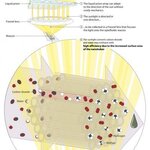
Optofluidic solar lighting systems could mean a real boost in solar energy - they capture sunlight from a roof using a light concentrating system that follows the sun's path by changing the angle of the water's refraction, and then distribute the sunlight throughout the building through light pipes or fiber optic cables to the ceilings of office spaces, indoor solar panels, or even microfluidic air filters.
Obviously a concern is how to maintain a comfortable constant light source for ceiling lighting—the flickering of the light source due to a cloud passing over would be annoying. The…
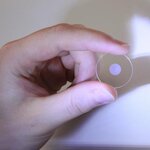
New nano-structured glass optical elements could significantly reduce the cost of medical imaging.
In their Applied Physics Letters paper, the team describes how they have used nano-structures to develop new monolithic glass space-variant polarization converters. These millimeter-sized devices generate ‘whirlpools’ of light enabling precise laser material processing, optical manipulation of atom-sized objects, ultra-high resolution imaging and maybe even table-top particle accelerators.
According to the researchers, ultra-short laser pulses
at sufficient intensities
can be used to…
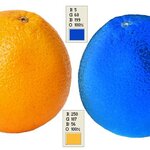
What Color Is An Orange ?
A question like that, here at science20.com, just has to be a trick question.
It is possible, by the application of common sense arguments, to prove to a scientific level of certainty that an orange is absolutely not orange.
How don't we see ?
Between 41% and 67% of participants, depending on the exact way the question was asked, thought that the eye sent out some kind of ray or beam in order for us to see.
That's not the startling bit.
The startling bit is that the participants in the experiment were college students who, just a few weeks before, had taken an…

One of the earliest lessons science students learn is that a beam of light travels in a straight line and fan out, or diffract, as they travel. Recently it was discovered that light rays can travel without diffraction in a curved arc in free space. These rays of light were dubbed “Airy beams,” after the English astronomer Sir George Biddell Airy, who studied what appears to be the parabolic trajectory of light in a rainbow.
Now, scientists with the Lawrence Berkeley National Laboratory have demonstrated the first technique that provides dynamic control in real-time of the curved trajectories…
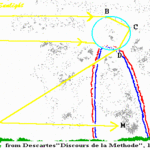
My wife and I once saw a rainbow and we discussed how it happened. She listened somewhat patiently for the first few sentences and then told me I was spoiling the magic of the rainbow, like it was somehow less romantic if she knew how it happened.(1)
Men, you are with me on this; she has a man who can make a rainbow for her any time she wants - and will. That's a higher order of romantic, I think you will agree. Plus, I have to defend all rainbow-making men and note that because my rainbow is a special distribution of colors whose reference point is her eyes, no one else will ever see it. Is…

The future of networking may mean streaming high-definition movies at blazing fast speeds and the routers are the lights in the room.
Scientists at the Fraunhofer Institute for Telecommunications, Heinrich Hertz Institute HHI in Berlin, Germany, have developed a new transfer technology for video data and were able to transfer data at a rate of 100 megabits per second (Mbit/s), without any losses, using LEDs in the ceiling that light up more than ten square meters (90 square feet).
"This means that we transferred four videos in HD quality to four different laptops at the same time,"…
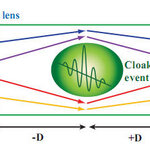
Researchers from Cornell say that by using a bit of electromagnetics wizardry they can create a 'hole' in space and keep it hidden - spatial cloaking. Invisible time.
We see things using light, of course, namely as light scatters on an object. Using materials with a negative index of refraction, experiments have been able to create an 'invisibility cloak' for objects, which is certainly exciting. The downside is they are not in the visible range so Romulans are not going to be invading Earth any time soon.
We've also written about an invisibility cloak for time…

Researchers are reporting the construction of what they term "artificial molecules" and say they can use the technology to engineer a new generation of nanomaterials that control and direct the energy absorbed from light.
Including an antenna that can build itself.
Traditional antennas increase the amount of an electromagnetic wave – such as a radio frequency – that is absorbed, and then funnel that energy to a circuit. These nanoantennas instead increased the amount of light that is absorbed and funneled it to a single site within their molecule-like complexes. This concept is already used…